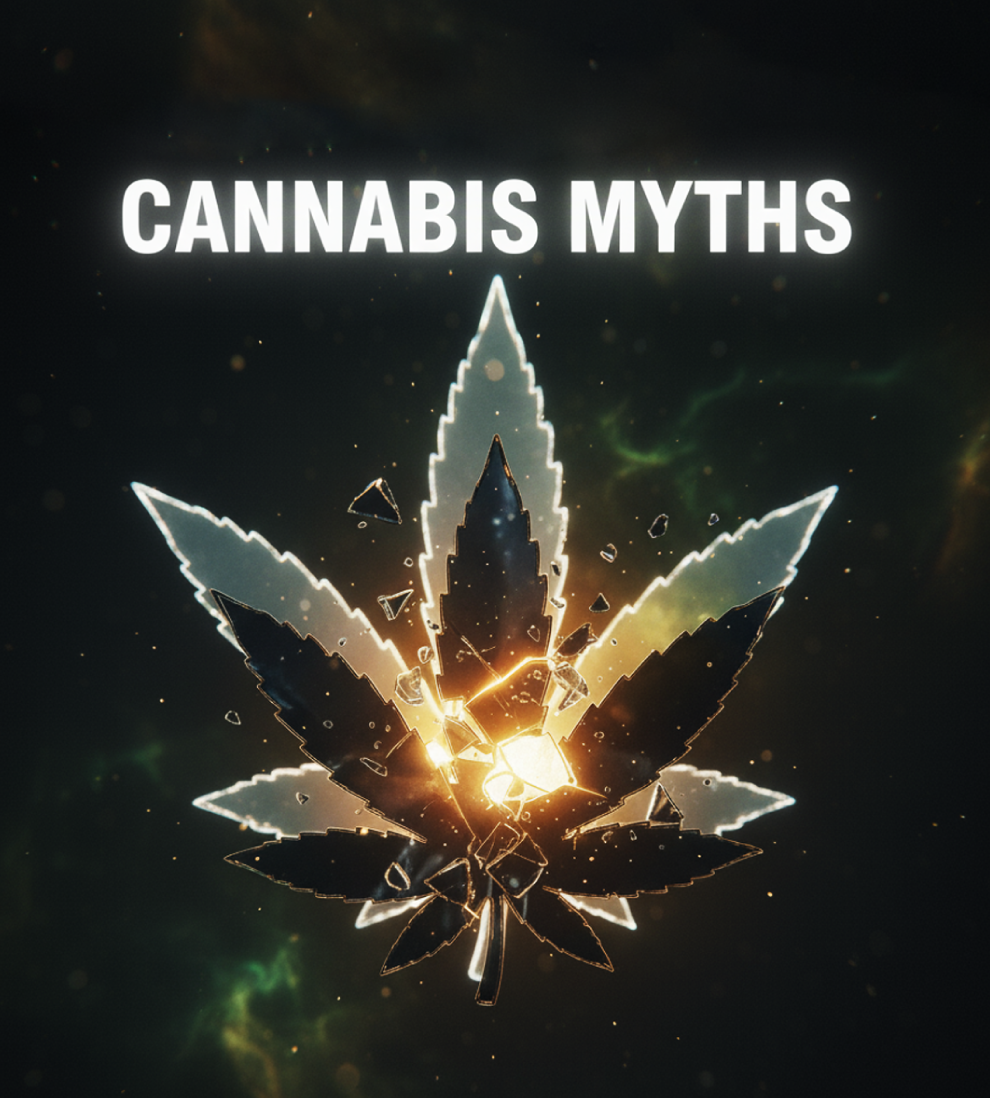Cannabis has long been a subject of controversy, misinformation, and misunderstanding. Over the years, myths and stereotypes have circulated, influencing public perception and policy. As cannabis becomes more accepted and legalized in various parts of the world, it’s crucial to separate fact from fiction. In this post, we’ll take a deep dive into some of the biggest myths about cannabis and reveal the truth behind them.
Myth 1: Cannabis is a Gateway Drug
One of the most pervasive myths surrounding premium cannabis flower is the idea that it acts as a “gateway drug”-meaning that its use leads to the consumption of harder, more dangerous substances like cocaine, heroin, or methamphetamine.
The Truth: Research has shown that there is no definitive evidence that cannabis use directly leads to the use of other, more harmful drugs. While it’s true that many people who use illicit substances have also tried cannabis, the majority of cannabis users do not go on to use harder drugs. Several factors contribute to this narrative, such as the criminalization of cannabis, which often places cannabis users in the same social circles as people who use harder drugs. However, the notion of a causal relationship between cannabis and more dangerous substances is largely unsubstantiated.
Additionally, cannabis has been shown to have therapeutic benefits for various health conditions, including chronic pain, anxiety, and insomnia, making it an increasingly popular alternative to prescription medications-especially opioids. The real “gateway” issue may not be cannabis itself, but the lack of proper regulation, education, and harm-reduction strategies in dealing with drug use in general.
Myth 2: Cannabis is Completely Harmless
Cannabis is often hailed as a natural and harmless substance, especially with the growing body of research supporting its medical benefits. While it’s true that cannabis has many therapeutic properties, it’s also important to acknowledge that it’s not entirely risk-free.
The Truth: Cannabis does have potential side effects, especially when used irresponsibly or excessively. Short-term effects can include impaired memory, decreased motor coordination, and altered judgment, which can make activities like driving dangerous. Long-term cannabis use, especially in adolescents, can be associated with cognitive issues, memory problems, and mental health concerns, including increased risk of developing disorders like schizophrenia in predisposed individuals.
Another consideration is the impact of smoking cannabis on lung health. While the health risks of smoking cannabis are still being studied, smoking in any form can irritate the lungs and cause issues over time. For this reason, many health professionals recommend alternative methods of consumption, such as edibles or vaporizers, to mitigate potential harm to the lungs.
Cannabis should be used responsibly, and it’s essential to understand the risks involved, particularly when it comes to mental health and long-term use. Like any substance, moderation is key.
Myth 3: You Can’t Overdose on Cannabis
A commonly held belief is that it’s impossible to overdose on cannabis, primarily because it doesn’t cause respiratory depression like opioids or alcohol. However, people often believe this means it is completely safe to use in any amount.
The Truth: While it is true that there have been no reported cases of fatal cannabis overdoses, it is still possible to experience an overdose in the sense of acute toxicity. Overconsumption of cannabis, especially through edibles, can lead to an overwhelming experience characterized by anxiety, paranoia, dizziness, nausea, and vomiting. In extreme cases, it can even cause hallucinations or a panic attack. This is most often seen when people underestimate the potency of edibles, which can take longer to affect the body than smoking or vaping.
In addition, chronic overuse of cannabis can lead to cannabis use disorder, where individuals develop a psychological dependence on the substance. This can interfere with daily life, work, and relationships, and may require professional intervention to manage.
So, while a fatal overdose on cannabis is virtually unheard of, it’s important to use cannabis in moderation and be aware of your limits, especially when using high-potency products like concentrates or edibles.
Myth 4: Cannabis Makes You Lazy and Unmotivated
The stereotype of the “lazy stoner” is one of the oldest myths associated with cannabis. Many people assume that anyone who uses cannabis regularly will become lethargic, uninspired, and unproductive.
The Truth: While cannabis can induce feelings of relaxation or even fatigue, it does not inherently make people lazy or unmotivated. In fact, cannabis has a wide variety of effects depending on the strain, the method of consumption, and the individual using it. Some strains of cannabis, particularly those that are higher in CBD (cannabidiol), have been shown to promote focus, creativity, and mental clarity, while others, such as those with higher THC (tetrahydrocannabinol) content, may be more sedating.
Moreover, New York cannabis dispensary has been used for centuries by artists, writers, musicians, and other creatives to enhance their work, offering a different perspective and a sense of inspiration. Many people report that cannabis helps them concentrate and feel more motivated to engage in tasks like writing, exercising, or cleaning. The idea that cannabis automatically leads to a lack of ambition is an oversimplification.
What’s important is using cannabis in a way that complements your lifestyle. For some, it’s a tool for relaxation or stress relief, while for others, it may serve as a catalyst for creativity and productivity.
Myth 5: Cannabis is Only for Recreational Use
One of the most persistent myths about cannabis is that it’s only useful for recreational purposes. This belief often overlooks the medical benefits that cannabis can offer to individuals suffering from various chronic conditions.
The Truth: Cannabis has been used as a medicinal plant for thousands of years, and modern research is continually uncovering its therapeutic potential. The two main compounds in cannabis-THC and CBD-have been shown to be effective in treating a range of conditions, from chronic pain and inflammation to anxiety, depression, and even certain types of epilepsy.
In fact, cannabis-based medications such as Epidiolex, which contains CBD, have been approved by the FDA for the treatment of certain forms of epilepsy. Other cannabis-derived products, like Sativex (a combination of THC and CBD), have been used to treat symptoms of multiple sclerosis and cancer-related pain.
As legalization continues to spread, more people are turning to cannabis as an alternative to traditional pharmaceutical treatments, especially for conditions where opioids and other medications may have unwanted side effects. While more research is needed to fully understand all the potential health benefits of cannabis, it is clear that it offers more than just a recreational high.
Conclusion
As cannabis continues to evolve from a largely taboo substance to a mainstream product, it’s essential to challenge the myths and misconceptions that have shaped public perception for decades. By addressing the truth behind the most common cannabis myths, we can make more informed decisions about its use, understand its risks and benefits, and ultimately help create a more balanced and evidence-based conversation around cannabis.
Cannabis is not a perfect substance, and like any other, it should be used responsibly. However, it’s clear that many of the myths surrounding cannabis are rooted in outdated information or misunderstandings. By dispelling these myths, we can move towards a future where cannabis is treated with the respect, knowledge, and understanding it deserves.

